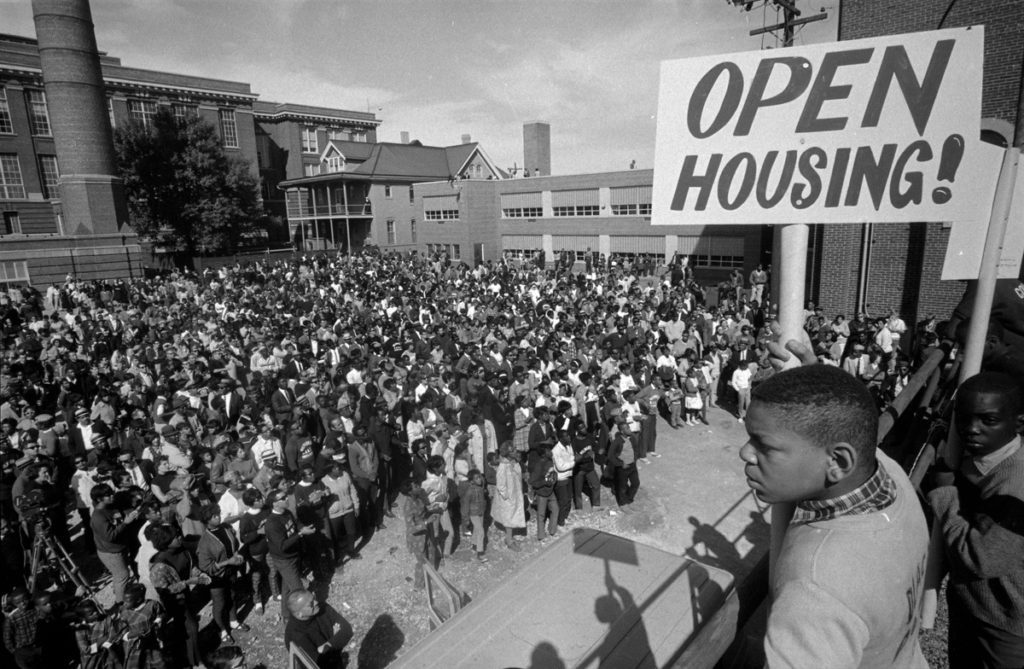Photo via Milwaukee Sentinel: a rally for open housing at St. Boniface Church in Milwaukee, WI, 1967.
The FWD #153 • 446 Words
New initiatives are reconstructing housing programs and policies to address racial inequities.
The housing sector illustrates one of the most blatant examples of racial inequity in the nation. Housing remains highly segregated in many communities and housing cost burdens for both renters and owners are significantly higher for Black households than for white. The homeownership gap between white and Black households is vast and is growing. This gap is one of the major contributors to the racial wealth gap as home equity is the principal source of wealth for low- and middle-income families in the US. All of this was encouraged by public policies such as redlining, segregated public housing, the exclusion of Black families from federal homeownership initiatives, and much more.
Since the summer of 2020 and the resurgence of the Black Lives Matter movement, there has been increased discussion of how housing programs and policies can be reinvented to repair these injustices. Now we are beginning to see the early stages of this work.
The Town of Evanston, Illinois (a northern suburb of Chicago) became the first community in the nation to formally adopt a reparations program focused on housing. In Evanston, Black households that lived in the community between 1919 and 1969 are eligible for grants of $25,000 that can be used for home repair, down payments, and mortgage payments. A $10 million fund has been initially established with revenue generated by a new city tax on recreational marijuana.
Of course, the path will not be easy and the program is facing challenges from potential recipients who point to damages that exceed the benefits that the program provides, as well as other Evanston residents and national groups who oppose such reparations.
The Chicago area is the site of another early stage effort to address inequities in housing with the City of Chicago’s commissioning of a Racial Equity Impact Assessment for their Qualified Allocation Plan (QAP). The QAP is the document that guides the allocation of Low-Income Housing Tax Credits (Chicago receives its own allocation, separate from the State of Illinois). The REIA examines the QAP through a racial equity lens to determine how racial and ethnic groups are affected by the policy.
The result is a series of recommendations that touch on wealth-building, increased opportunities for developers and contractors of color, tenant screening criteria that may adversely affect Black and brown households, and a host of others. The Chicago QAP is the first in the nation to do this.
We will be tracking other emerging housing efforts around the country that target the impacts of generations of systemic racism in housing policies. Stay tuned to our weekly blog to find out more.
